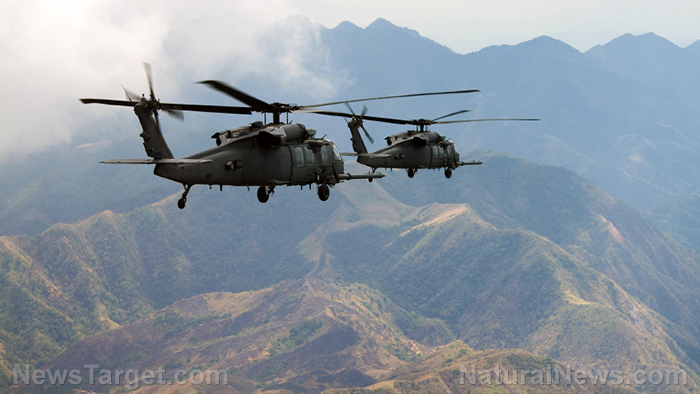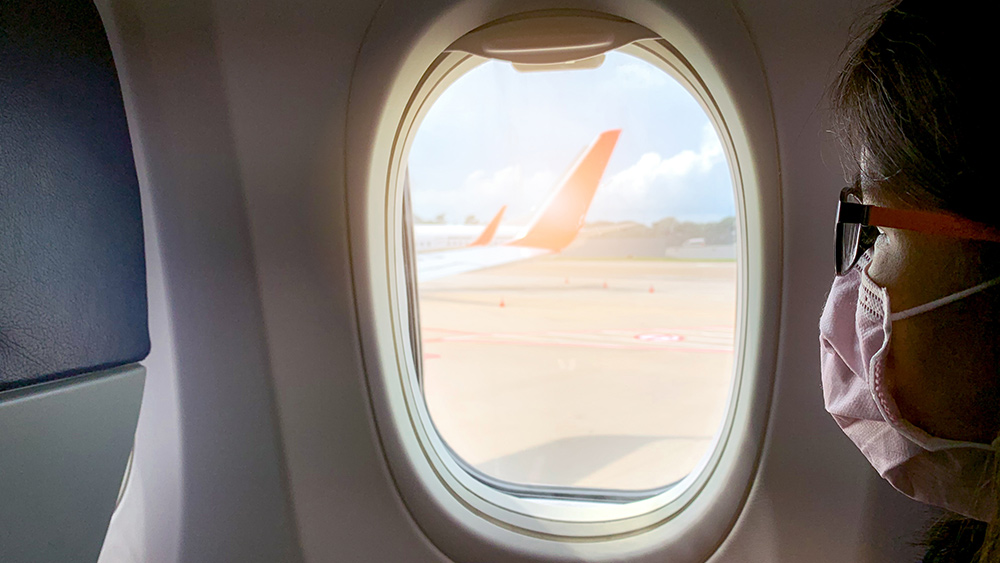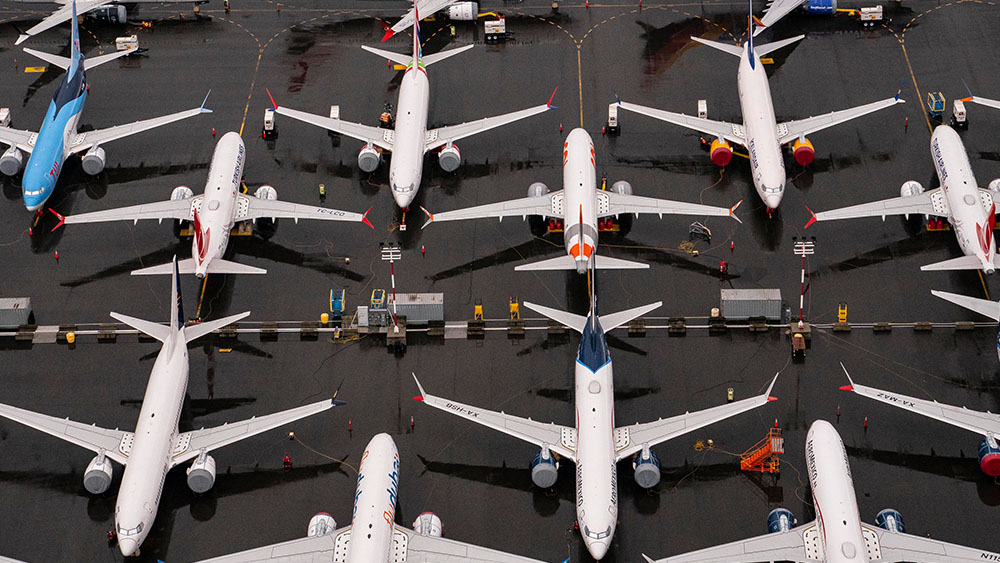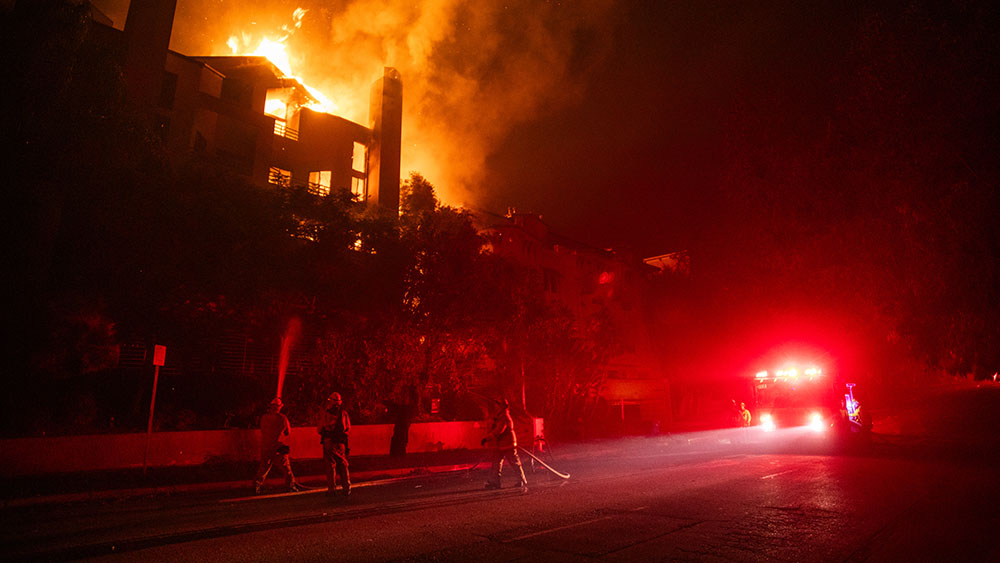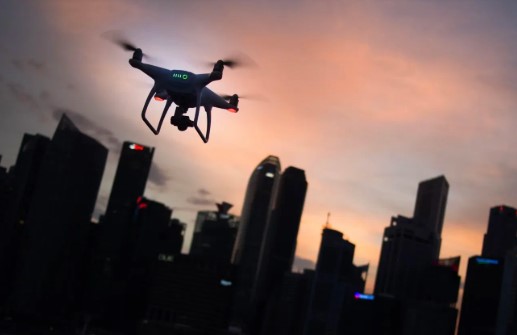Army helicopter was warned twice before deadly collision with American Airlines jet near D.C.
02/03/2025 / By Cassie B.
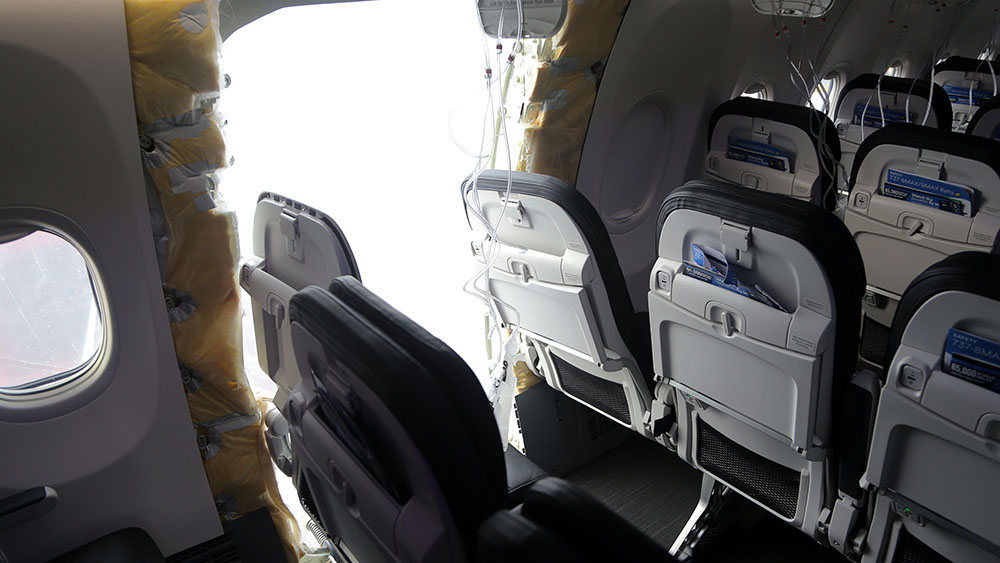
- A U.S. Army Black Hawk helicopter collided with an American Airlines jet over the Potomac River despite two air traffic control warnings, killing all 67 people on board.
- The helicopter crew requested “visual separation” but likely mistook another aircraft for the jet, leading to the crash 12 seconds after the final warning.
- Reagan National Airport’s congested airspace, understaffing, and mixed civilian-military traffic management are under scrutiny as potential contributing factors.
- Preliminary data suggests the Black Hawk may have been flying above the 200-foot altitude limit, with radar showing it at 200 feet and the jet at 325 feet at impact.
- The crash, the deadliest U.S. aviation incident since 2009, has sparked calls for improved airspace coordination and safety protocols.
The U.S. Army Black Hawk helicopter crew had been warned twice by air traffic control about the approaching American Airlines passenger jet they ultimately crashed into on Wednesday night, with the final alert coming just 12 seconds before impact over the Potomac River near Ronald Reagan Washington National Airport. Now, investigators will be looking into what went wrong in the skies above one of the nation’s busiest airspaces despite the warnings. All 67 people on board the plane and helicopter died in the accident.
Warnings and missed opportunities
According to radio transmissions reviewed by aviation experts, the Black Hawk crew was first alerted to the American Airlines flight two minutes before the crash. The crew responded by requesting “visual separation,” a standard procedure where pilots agree to maintain a safe distance from another aircraft by keeping it in sight. Air traffic control approved the request both times. However, at 8:48 p.m., the two aircraft collided several hundred feet above the Potomac River.
Retired National Transportation Safety Board (NTSB) investigator Scott Dunham told The Washington Post that the helicopter crew likely saw a different plane. Flight path data shows another aircraft behind the American Airlines jet, approximately 11 miles from the helicopter. “If he was looking at the right airplane, he wouldn’t have hit him,” Dunham said. “They were miles apart. … The resolution literally takes seconds.”
Understaffed air traffic control and altitude concerns
The crash has also drawn scrutiny of the air traffic control tower at Reagan National Airport, which is known for its congested airspace. Critics argue that understaffing and the complexity of managing both civilian and military traffic may have contributed to the tragedy. While the tower issued timely warnings, some experts question whether more could have been done to prevent the collision.
Additionally, preliminary data suggests the Black Hawk may have been flying above the 200-foot altitude limit for helicopters in the area. Radar data indicates the helicopter was at 200 feet at the time of the crash, but the American Airlines jet was at approximately 325 feet, suggesting the helicopter was higher than permitted. Investigators are still working to confirm these details.
The collision occurred during a night of gusting winds and heavy air traffic, adding layers of difficulty for pilots and controllers. Capt. Ross Aimer, a retired United Airlines pilot, described Reagan National as “one of the most congested airspaces in the country.” He noted that the airport’s crisscrossing runways and high traffic volume create inherent risks, especially at night.
The NTSB is investigating whether the helicopter crew was using night-vision goggles, which are standard for military training flights. The cockpit voice recorder from the American Airlines jet captured a “verbal reaction” from the crew one second before impact, followed by the sound of the collision.
As of Saturday, 42 bodies have been recovered from the icy Potomac River, with efforts ongoing to retrieve the remaining victims. The U.S. Army identified the third soldier killed in the crash as Captain Rebecca Lobach, a dedicated aviation officer and advocate for sexual assault victims. The names of the 60 passengers and four crew members on the American Airlines flight have not yet been officially released.
The crash marks the deadliest aviation incident in the U.S. since 2009 and has reignited debates about airspace management and safety protocols. While the investigation is still in its early stages, the tragedy underscores the need for improved coordination and resources in one of the nation’s most challenging flight corridors.
Sources for this article include:
Submit a correction >>
Tagged Under:
accident, aviation, Plane Crash, warnings
This article may contain statements that reflect the opinion of the author
RECENT NEWS & ARTICLES
FlyingCars.News is a fact-based public education website published by Flying Cars News Features, LLC.
All content copyright © 2018 by Flying Cars News Features, LLC.
Contact Us with Tips or Corrections
All trademarks, registered trademarks and servicemarks mentioned on this site are the property of their respective owners.


